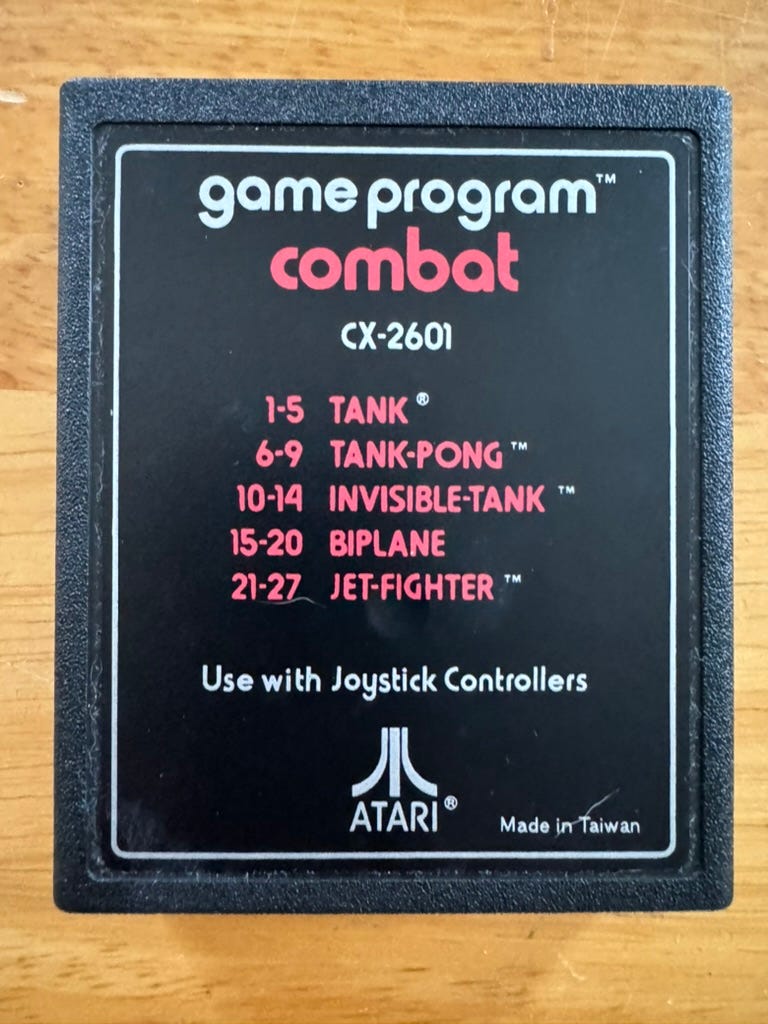Recreating Tank
Making a retro game with modern tools
Tank is an early arcade game made by Atari subsidiary Kee Games. It was released in late 1974, so it will be 50 years old later this year.
Kee Games was an interesting strategy that Atari employees to sell more arcade games. They used the subsidiary to sell “clone” versions of their popular games to increase distribution and sales.
Tank became a popular arcade game and helped keep Atari out of financial troubles in 1975.
You might not remember Tank itself (I certainly don’t), but you most certainly remember the version that was included on the Combat cartridge for the Atari VCS. Combat was the pack-in game for the Atari VCS and Tank was one of the game variations that it included. If you collect Atari VCS games, you’ll find that the Combat cartridge is probably the most common of them all. Everyone had Combat!
Tank is a two-player game with each tank controlled by a joystick. It was a simple head-to-head game where you shot at your opponent. Each “hit” registered as a point and the person with the most points when the game ended (after 2 minutes in 16 seconds) was the winner.
Several people worked on Combat for the VCS, including Joe Decuir, one of the people heavily involved in the development of the VCS and later the Atari 8-bit computers.
The Combat cartridge had variations of Tank, with versions that had obstacles, bullets that would ricochet around the screen or wrap around the screen, all of which change the game strategy.
About 10 years ago I created a version of Tank using Xojo1. It’s a pretty simple version intended to demonstrate how to use Xojo’s graphics capabilities and can be played using a joystick or the keyboard.
My version does not have any obstacles or special features, although it does have sound effects. Tank is included as an example project with Xojo, so you can try it out by downloading Xojo (it’s free to use) and then opening it from the Project Chooser.
After opening the Tank project, click the Run button to try it out.
Since Xojo is a cross-platform development tool, Tank works on Mac, Windows and Linux. I haven’t yet created versions for iOS or Android, although I suspect it won’t be too difficult as most of the code would be the same.
If you’re so inclined, you might want to try adding the obstacles or different behavior of the missiles. Xojo’s language syntax resembles BASIC and Visual BASIC, so it should be somewhat familiar (and perhaps appealing) to retro computer enthusiasts. I’d love to see what people come up with!
A few years later I created NetTank, a networked version of Tank where you can play against someone running Tank on another computer. Let’s take a look in more detail at NetTank and look at some of its design and code.









